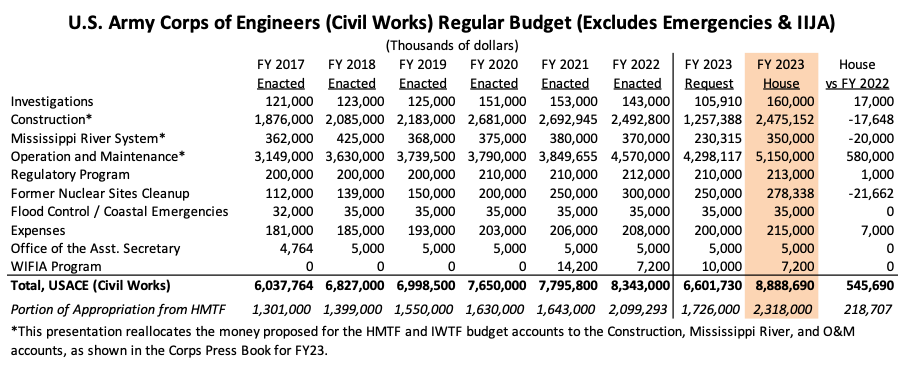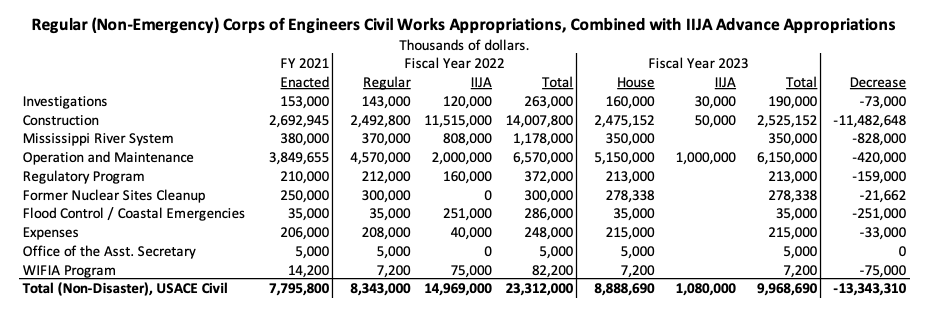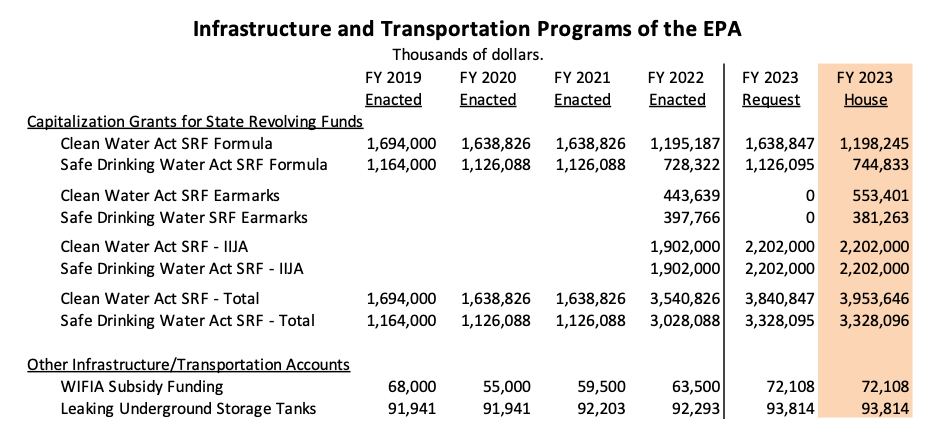The House Appropriations Committee has released a draft bill that increases the regular budget for the U.S. Army Corps of Engineers’ water resources program by $546 million over the amount enacted in 2022.
That amounts to a 6.5 percent increase over the previous year, which for most capital-heavy programs would be impressive, but since 2017, Congress has given the Corps annual regular budget increases that, if the House number holds up, average to be 7.9 percent per year (from fiscal 2017’s $6.04 billion to the House bill’s $8.89 billion).

The House bill provides the full $2.3 billion appropriation from the Harbor Maintenance Trust Fund necessary to continue the gradual spend-down of that fund’s accumulated balances intended by the Shelby-DeFazio Amendment.
However, the regular Corps budget is often augmented (and sometimes exceeded) by emergency appropriations to fix things after natural disasters. Plus, the Infrastructure Investment and Jobs Act enacted last year provided a one-time slug of additional funding for the Corps to address longtime capital backlog issue. Almost all of that IIJA funding was provided in fiscal 2022, with small amounts remaining that become effective in 2023 and 2024.
In that light, the House bill contributed to a $13.3 billion reduction from the (oversized) FY 2022 total.

Meanwhile, a separate draft bill funding the Environmental Protection Agency has seen the IIJA come along just in time to save wastewater and safe drinking water formula aid programs from the return of Congressional earmarking. In the 2022 act, and again in the 2023 House bill, formula programs are cut by over half a billion dollars per year and replaced with earmarks.
But with IIJA providing $23.4 billion over five years in advance appropriations for these grants to state revolving funds (split 50-50 between wastewater and drinking water grants), the return of the earmarks is masked by an overall spending increase of significant size.







